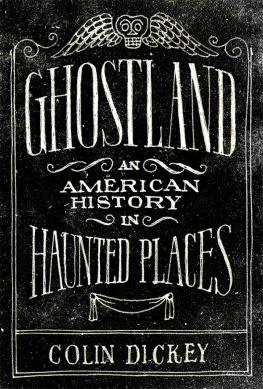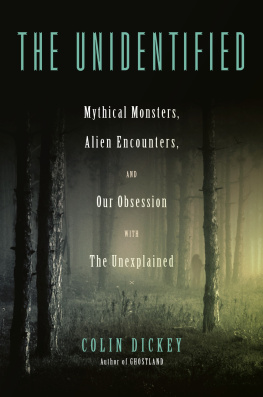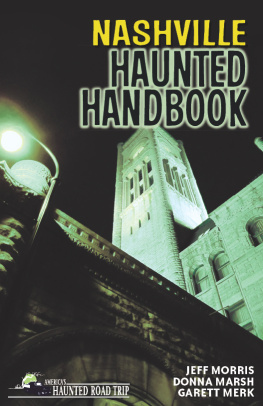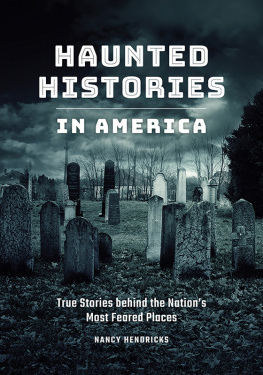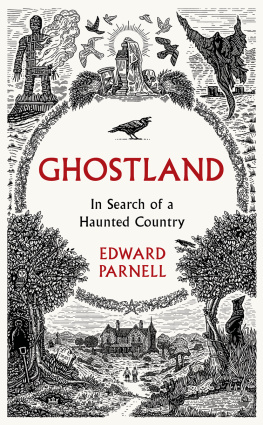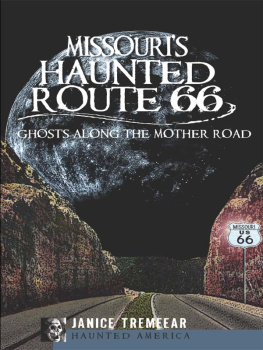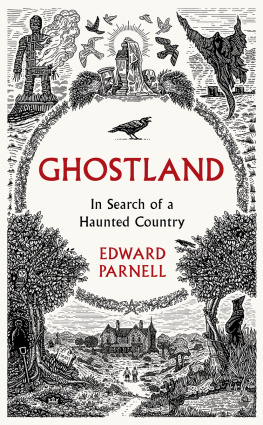Colin Dickey - Ghostland: An American History in Haunted Places
Here you can read online Colin Dickey - Ghostland: An American History in Haunted Places full text of the book (entire story) in english for free. Download pdf and epub, get meaning, cover and reviews about this ebook. year: 2016, publisher: Viking, genre: Detective and thriller. Description of the work, (preface) as well as reviews are available. Best literature library LitArk.com created for fans of good reading and offers a wide selection of genres:
Romance novel
Science fiction
Adventure
Detective
Science
History
Home and family
Prose
Art
Politics
Computer
Non-fiction
Religion
Business
Children
Humor
Choose a favorite category and find really read worthwhile books. Enjoy immersion in the world of imagination, feel the emotions of the characters or learn something new for yourself, make an fascinating discovery.
- Book:Ghostland: An American History in Haunted Places
- Author:
- Publisher:Viking
- Genre:
- Year:2016
- Rating:5 / 5
- Favourites:Add to favourites
- Your mark:
Ghostland: An American History in Haunted Places: summary, description and annotation
We offer to read an annotation, description, summary or preface (depends on what the author of the book "Ghostland: An American History in Haunted Places" wrote himself). If you haven't found the necessary information about the book — write in the comments, we will try to find it.
Dickey is one of the sharpest and most erudite writers around, and his new book makes for a perfect Halloween read.Mens Journal
An intellectual feast for fans of offbeat history, Ghostland takes readers on a road trip through some of the countrys most infamously haunted placesand deep into the dark side of our history.
Colin Dickey is on the trail of Americas ghosts. Crammed into old houses and hotels, abandoned prisons and empty hospitals, the spirits that linger continue to capture our collective imagination, but why? His own fascination piqued by a house hunt in Los Angeles that revealed derelict foreclosures and zombie homes, Dickey embarks on a journey across the continental United States to decode and unpack the American history repressed in our most famous haunted places. Some have established reputations as the most haunted mansion in America, or the most haunted prison; others, like the haunted Indian burial grounds in West Virginia, evoke memories from the past our collective nation tries to forget.
With boundless curiosity, Dickey conjures the dead by focusing on questions of the livinghow do we, the living, deal with stories about ghosts, and how do we inhabit and move through spaces that have been deemed, for whatever reason, haunted? Paying attention not only to the true facts behind a ghost story, but also to the ways in which changes to those facts are madeand why those changes are madeDickey paints a version of American history left out of the textbooks, one of things left undone, crimes left unsolved.
Spellbinding, scary, and wickedly insightful, Ghostland discovers the past were most afraid to speak of aloud in the bright light of day is the same past that tends to linger in the ghost stories we whisper in the dark.
Colin Dickey: author's other books
Who wrote Ghostland: An American History in Haunted Places? Find out the surname, the name of the author of the book and a list of all author's works by series.

